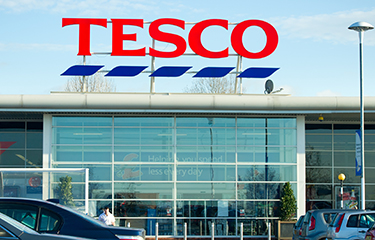U.K. supermarket chain Tesco has confirmed that it will initiate a new sourcing approach for tuna, working with its own-brand suppliers to introduce new due diligence processes within its supply chain, with the ultimate goal of moving towards 100 percent Marine Stewardship Council-certified tuna by 2025.
The retailer has joined WWF in advocating for a Seascape approach to marine sustainability to ensure whole marine ecosystems are maintained in a healthy, productive way. Tesco will first adopt Seascape for its tuna sourcing and has set out a roadmap to transition to sourcing only from fisheries with an ecosystem-based management approach by 2030.
It will also continue to support fishery improvement projects (FIPs), initiatives that aim to help fisheries work towards MSC certification, Tesco said.
Working with WWF and its suppliers, Tesco said it will encourage the industry-wide adoption of the SSB40 metric to report on the health of fish stocks. The metric will allow the retailer to know if its fish is being sourced from a marine environment in which the amount of breeding fish present is at least 40 percent of the amount in the original population, which it deemed a key component of maintaining healthy marine ecosystems.
Announcing the move, Tesco said marine biodiversity continues to be at risk from overfishing, despite improvements that have been made in fisheries management, with 94 percent of all fish stocks either overfished or at a maximum sustainable level.
Among the species most as risk is tuna, which is integral to the diets of millions of people across the globe, according to Tesco. Around two-thirds of Tesco tuna is already MSC-certified, while the rest is sourced from FIPs.
“Tuna is such an important species when it comes to the health of our marine environment, but it is still being overfished. This new approach to tuna-sourcing, developed in partnership with WWF, will play a critical role in regenerating tuna stocks, while maintaining whole marine ecosystems for future generations. We’ll be working with our suppliers and others across the industry to implement the roadmap, as well as advocating for this approach to be used across other key species as well,” Tesco Chief Product Officer Ashwin Prasad said.
WWF Global Tuna Leader Marcel Kroese said that “mining down tuna stocks” had undermined the vital role the fish play in in the ecosystem.
“We need a new holistic seascape approach with sustainable tuna-sourcing. Our analyses indicate that stocks where the number of mature ‘spawning’ tuna are at least 40 percent or higher, as a proportion of their original spawning levels, can act as a buffer against the uncertainty of the impact of climate change and still provide fish for us to eat,” he said. “Businesses at the heart of the food industry all have a responsibility to transform the sustainability of our food, so we are excited that Tesco is the first retailer in the U.K. to deliver a new roadmap which will see it work with its suppliers to bring them on board to WWF’s new sustainable tuna recommendations.”
The new Seascape approach, which mirrors the landscape approach adopted in the Tesco UK Zero Deforestation Soy Transition Plan (2018), and the climate approach in the Tesco Group Renewable Electricity Transition Plan (2017), was developed by Tesco and WWF in consultation with tuna experts and suppliers, the company said. It has been specifically designed to align with and build on existing tools and guidelines already widely used by the industry, including the guidelines of the Global Tuna Alliance (GTA) and the NGO Tuna Forum, and the MSC.
“Tesco’s decision to reform its tuna-sourcing policy comes at a time when strong and coordinated efforts are required to ensure we have sustainable fisheries for future generations. A large range of Tesco’s wild fish and seafood products currently bear the MSC eco-label and as tuna is one of the most popular seafood choices with shoppers, we welcome this commitment to 100 percent MSC labeling of tuna by 2025,” MSC U.K. and Ireland Program Director George Clark said.
The new approach is also closely aligned with the recommendations made in WWF’s tuna transition strategy, which urges:
- The adoption of SSB40 as the metric to assess the health of both the target and non-target stock in an ocean
- A requirement that fishing mortality levels are kept below 1, that best practice bycatch mitigation is implemented, and that all fisheries put 100 percent non-retention policies in place and promote best practice fish handling and monitoring on board fishing vessels.
- A call for NGO best practices to be followed around traceability, transparency, transshipment, gear management, and waste management.
- Robust management to be put in place including precautionary harvest control rules or harvest strategies, management of illegal, unreported, and unregulated fishing (IUU) fishing, and integration of marine protected areas (MPAs).
Photo courtesy of JuliusKielaitis/Shutterstock







